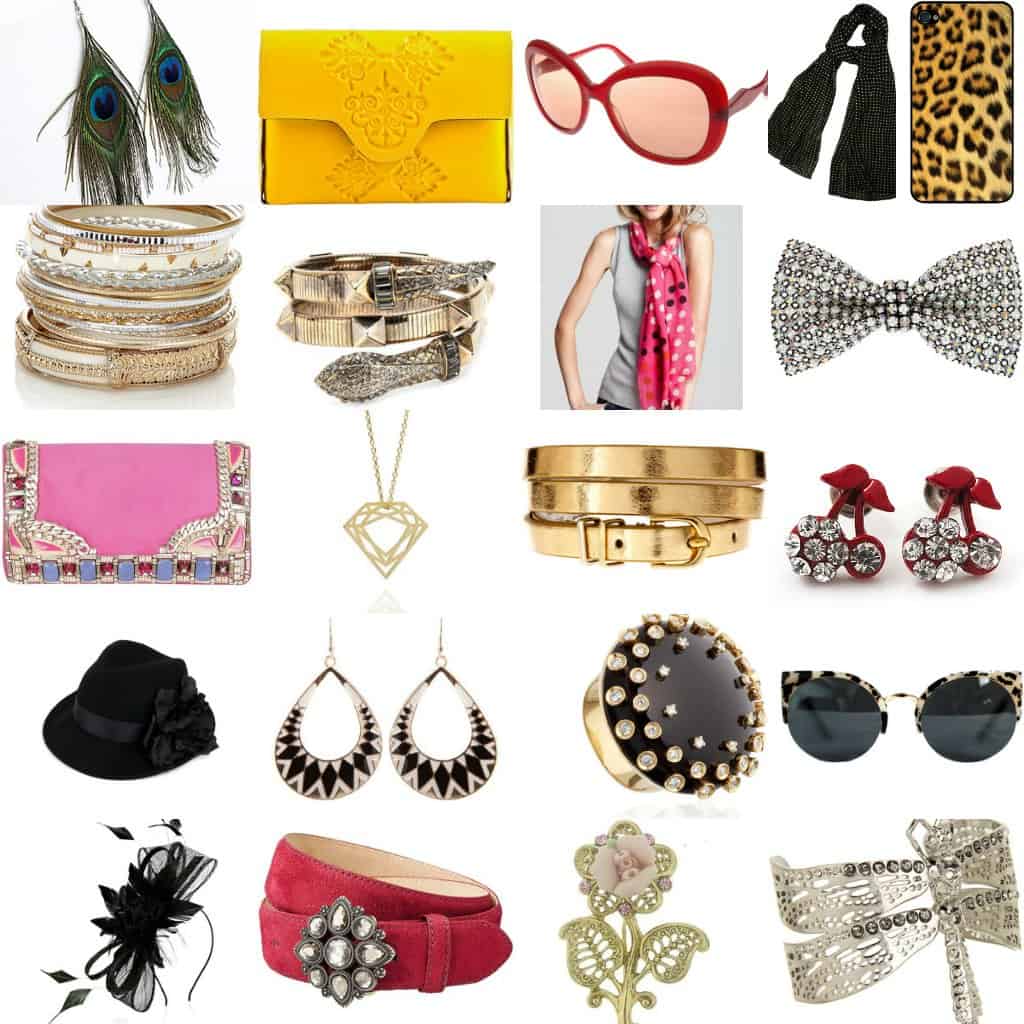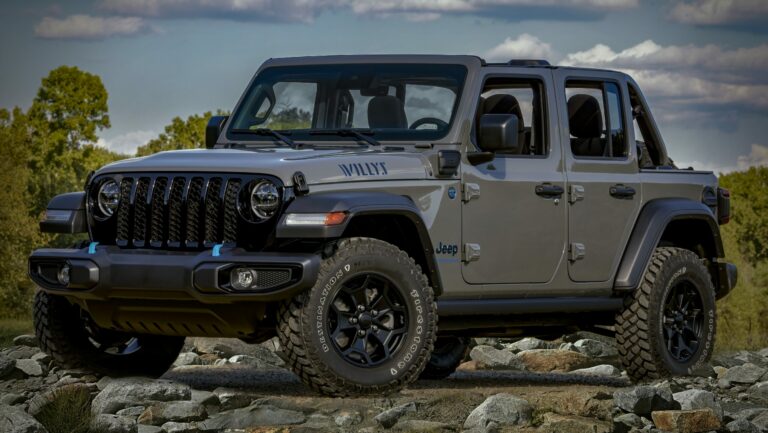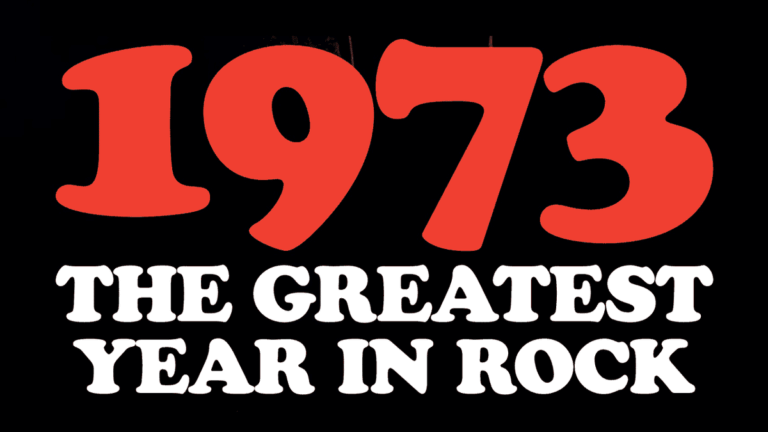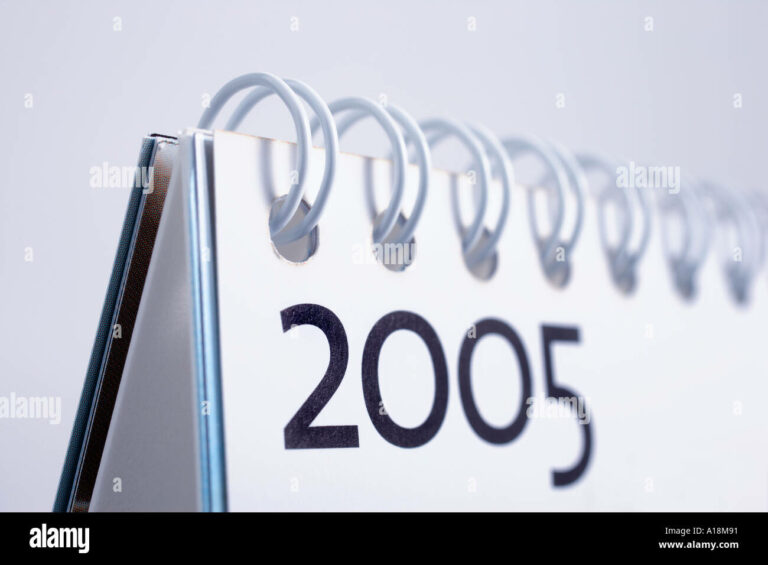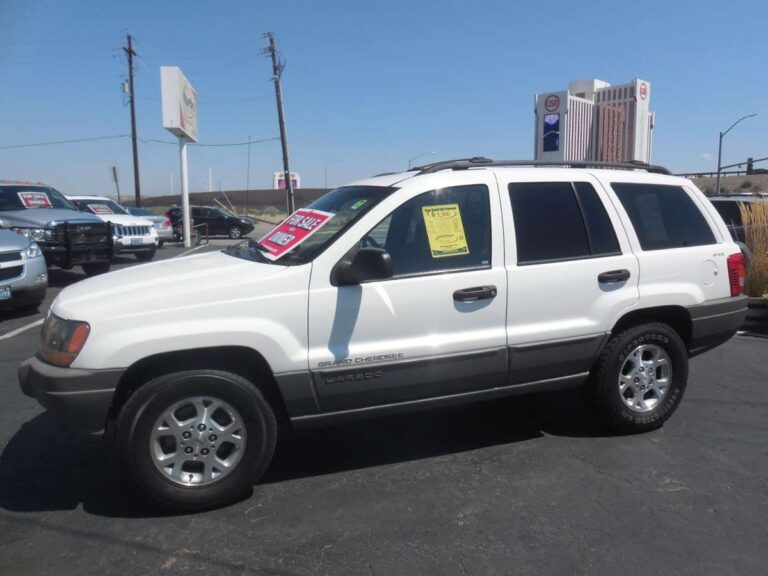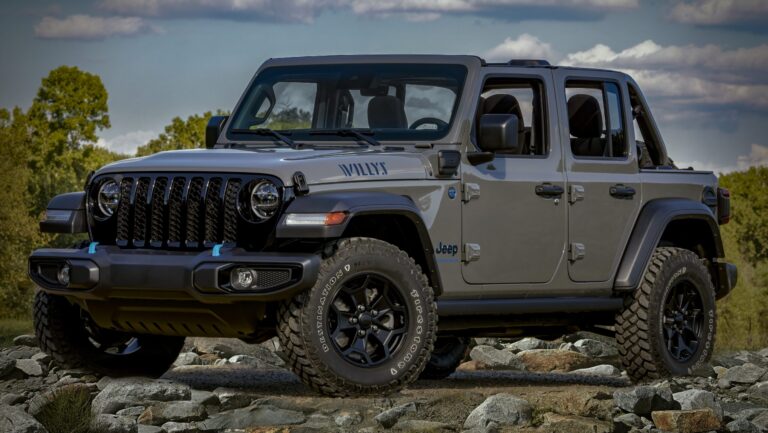Accessories For The Jeep Wrangler: Your Ultimate Guide to Customization and Capability
Accessories For The Jeep Wrangler: Your Ultimate Guide to Customization and Capability jeeps.truckstrend.com
The Jeep Wrangler isn’t just a vehicle; it’s a statement, a lifestyle, and a blank canvas for adventure. From its rugged military origins to its modern icon status, the Wrangler has always been synonymous with freedom, exploration, and unparalleled off-road capability. But what truly transforms a stock Wrangler into a personalized beast tailored for specific terrains, activities, or simply individual taste? The answer lies in the vast, ever-expanding universe of accessories for the Jeep Wrangler.
These aren’t just mere add-ons; they are critical components that enhance performance, bolster protection, improve utility, and elevate aesthetics. Whether you’re a hardcore rock crawler, an overland enthusiast, a weekend trail warrior, or simply someone who loves the open-air freedom of a unique vehicle, understanding the world of Wrangler accessories is key to unlocking its full potential. This comprehensive guide will delve into the essential categories of accessories, offering insights, practical advice, and everything you need to know to customize your Jeep Wrangler effectively and safely.
Accessories For The Jeep Wrangler: Your Ultimate Guide to Customization and Capability
I. Essential Off-Road & Recovery Gear: Prepared for Anything
When you venture off the beaten path, preparation is paramount. Off-road and recovery gear are not just accessories; they are safety nets and essential tools that ensure you can tackle challenging obstacles and get out of sticky situations.
- Winches: A front-mounted winch is arguably the most critical piece of recovery gear. Available in electric or hydraulic variants, winches provide the pulling power to self-recover or assist others. Key considerations include pulling capacity (typically 1.5 times your vehicle’s Gross Vehicle Weight), line material (synthetic rope for lightness and safety, steel cable for durability), and features like remote control and planetary gears. Brands like Warn, Smittybilt, and ComeUp are industry leaders.
- Recovery Straps, Ropes, and Shackles: Kinetic recovery ropes (or "snatch straps") are designed to stretch, creating kinetic energy that helps pull a stuck vehicle out with a dynamic jerk. Static tow straps are for steady pulls. Heavy-duty D-ring shackles (or soft shackles for safety) are necessary for secure attachment points to bumpers or recovery points.
- Hi-Lift Jacks: These versatile jacks are indispensable for lifting a Jeep on uneven terrain, changing tires, or even as a hand winch. Proper training is crucial due to their inherent dangers if misused.
- Shovels, Axes, and Traction Boards: A sturdy shovel for digging out tires, an axe for clearing brush, and traction boards (like Maxtrax or X-Bull) for providing grip on sand, mud, or snow are simple yet effective tools.
- On-Board Air Compressors: Whether it’s airing down for better traction on trails or airing back up for highway travel, an air compressor (portable or mounted) is vital. It also helps with tire repairs.
- Considerations: Always prioritize quality and proper training for recovery gear. A cheap winch or strap can fail, leading to dangerous situations. Understand your vehicle’s recovery points and the safe limits of your equipment.

II. Performance & Suspension Upgrades: Conquering Any Terrain
Lifting your Jeep and enhancing its suspension system is often the first significant modification for serious off-road enthusiasts. These upgrades directly impact your Wrangler’s capability.
- Lift Kits:
- Budget Boosts/Coil Spacers: Inexpensive, simple lifts that add spacers above your existing springs. Good for minor tire size increases and aesthetics.
- Coil Spring Lifts: Replace factory springs with longer, stiffer ones. Offer better ride quality and articulation than spacers.
- Short Arm Lifts: Replace springs, shocks, and control arms. Provide significant lift and improved articulation.
- Long Arm Lifts: For extreme articulation and off-road performance, these kits relocate control arm mounting points further back on the frame, resulting in flatter control arm angles and a smoother ride on and off-road.
- Benefits: Increased ground clearance, ability to fit larger tires, improved articulation, and a more aggressive stance.

- Shocks & Coilovers: Upgraded shocks (e.g., Fox, Bilstein, King, Rancho) are crucial for controlling suspension travel, dissipating energy, and improving ride quality. Coilovers integrate the spring and shock into one unit, offering superior adjustability and performance for high-end builds.
- Steering Stabilizers: Help reduce bump steer and shimmy, especially with larger tires.
- Gearing: When installing significantly larger tires, re-gearing your axles (changing the differential’s ring and pinion gears) is often necessary to restore lost power, improve fuel economy, and maintain proper transmission shift points.
- Axle Upgrades: For extreme off-roading, upgrading from stock Dana 30/44 axles to stronger aftermarket versions (e.g., Dana 60, Currie RockJock) or reinforcing existing axles with trusses and gussets can prevent breakage.
- Considerations: Choose a lift kit appropriate for your intended use and budget. Professional installation is highly recommended for complex suspension modifications, as improper alignment can lead to dangerous handling issues. Account for the domino effect: a lift often necessitates new shocks, control arms, drive shafts, and potentially re-gearing.

III. Exterior Protection & Utility: Shielding Your Investment
Protecting your Wrangler from trail damage while adding functionality is crucial for serious off-roaders.
- Bumpers (Front & Rear): Aftermarket bumpers offer significantly more protection than stock plastic bumpers.
- Front Bumpers: Often steel, winch-ready, and designed for improved approach angles. Available in full-width, mid-width, or stubby (for maximum tire clearance).
- Rear Bumpers: Can incorporate tire carriers for oversized spares, D-ring mounts, and improved departure angles.
- Materials: Steel for maximum protection, aluminum for weight savings.
- Rock Sliders/Side Steps: These bolt-on accessories protect your rocker panels from rocks and obstacles. True rock sliders are frame-mounted and designed to take a beating, while side steps primarily offer easier entry/exit.
- Skid Plates: Essential for protecting vulnerable undercarriage components like the engine oil pan, transmission, transfer case, and fuel tank from impacts.
- Fenders: Flat fenders or high-clearance fenders allow for larger tire fitment without lifting as much, and can be more durable than factory plastic.
- Roof Racks & Cargo Solutions: For overland travel or carrying extra gear, roof racks (basket, platform, or backbone systems) significantly increase cargo capacity. Compatible with rooftop tents, fuel cans, and recovery gear.
- Lighting: Auxiliary LED lighting is indispensable for night wheeling. Light bars (straight or curved), pod lights (spot or flood), ditch lights, and rock lights (to illuminate the ground beneath the vehicle) improve visibility and safety.
- Considerations: Weight is a factor, especially with steel armor. Heavier accessories can impact fuel economy and necessitate suspension upgrades. Ensure accessories don’t compromise approach, departure, or break-over angles.
IV. Interior Comfort & Convenience: Enhancing the Cabin Experience
While the Wrangler is known for its rugged exterior, its interior can be transformed for greater comfort, organization, and functionality.
- Seat Covers: Protect your seats from mud, water, sun, and wear. Available in durable materials like Neoprene, Cordura, or ballistic nylon. Many are waterproof or water-resistant.
- Floor Mats & Liners: All-weather floor liners (e.g., WeatherTech, Husky Liners) offer superior protection against dirt, mud, snow, and spills, keeping your carpet pristine.
- Storage Solutions: Under-seat storage bins, cargo nets, MOLLE (Modular Lightweight Load-carrying Equipment) panels for seat backs or tailgate, and locking storage boxes help organize gear and secure valuables.
- Grab Handles: Essential for easier entry and exit, especially with a lifted Jeep. Can be mounted to roll bars or A-pillars.
- Communication Systems: A CB radio is still standard for trail communication with other Jeeps. GMRS (General Mobile Radio Service) radios offer longer range and clearer audio.
- In-Cab Entertainment & Navigation: Upgraded head units with larger screens, Apple CarPlay/Android Auto, and integrated off-road navigation systems enhance the driving experience.
- Considerations: Choose materials that are easy to clean and durable enough for your activities. Good organization prevents distractions and keeps essential items within reach.
V. Tire & Wheel Upgrades: The Foundation of Performance
Tires and wheels are the direct interface between your Jeep and the terrain. Upgrading them is one of the most impactful modifications.
- Tire Choice:
- Mud-Terrain (MT): Aggressive tread for maximum grip in mud, rocks, and loose dirt. Noisy on pavement.
- All-Terrain (AT): A balance of off-road traction and on-road manners. Good for daily drivers who occasionally hit trails.
- Hybrid/RT (Rugged Terrain): A compromise between MT and AT, offering good off-road performance with acceptable road noise.
- Tire Size: Larger tires increase ground clearance and provide a larger contact patch. However, they impact gearing, fuel economy, and may require fender modifications or a lift.
- Wheel Types:
- Steel Wheels: Durable, inexpensive, but heavy.
- Alloy Wheels: Lighter, better heat dissipation, wide variety of styles.
- Beadlock Wheels: Securely clamp the tire bead to the rim, allowing for extremely low tire pressures off-road without the tire coming off the rim. Not DOT approved for road use in some areas, and require more maintenance.
- Backspacing & Offset: Critical for proper tire fitment and preventing rubbing. Backspacing determines how far the wheel sits inward or outward from the hub mounting surface.
- Considerations: Match your tire choice to your primary use. Ensure your spare tire carrier can handle the weight and size of your new tire/wheel combo. Larger tires also increase rotational mass, impacting braking performance.
VI. Aesthetic & Lifestyle Enhancements: Personalizing Your Ride
Beyond performance and protection, many accessories allow you to personalize your Wrangler and express your unique style.
- Grille Inserts: Add a custom look to your front grille, from mesh to specific designs.
- Hood Latches: Replace flimsy factory latches with heavy-duty, locking versions to prevent hood flutter and deter theft.
- Decals & Wraps: Custom graphics, stripes, or full vehicle wraps can dramatically change your Jeep’s appearance.
- Soft Tops & Hard Top Accessories:
- Aftermarket Soft Tops: Enhance convenience with features like faster folding or premium materials.
- Hard Top Hoists: For easy removal and storage of your hardtop in the garage.
- Headliners: Improve insulation and reduce road noise in hardtops.
- Door Upgrades: Full steel doors for security, half doors for an open-air feel with some protection, or tube doors for maximum open-air experience and visibility on trails.
- Considerations: Check local regulations regarding vehicle modifications (e.g., lighting color, fender coverage). Ensure aesthetic changes don’t impede functionality or safety.
Practical Advice & Actionable Insights for Jeep Wrangler Accessories
Navigating the vast world of Wrangler accessories can be overwhelming. Here’s how to approach it strategically:
- Define Your Purpose: Are you building a daily driver, a weekend trail rig, an overland explorer, or a hardcore rock crawler? Your primary use case should dictate your accessory choices.
- Set a Realistic Budget: Accessories can range from a few dollars to thousands. Prioritize essential safety and capability upgrades first.
- Research Thoroughly: Read reviews, watch installation videos, join online forums, and talk to experienced Jeep owners. Learn from others’ successes and mistakes.
- Prioritize Function Over Form (Initially): While aesthetics are fun, focus on upgrades that enhance safety, recovery, and capability before investing heavily in purely cosmetic mods.
- Start Small, Build Up: You don’t need to buy everything at once. Begin with foundational upgrades like tires, a mild lift, and basic recovery gear, then add more specialized items as your needs evolve.
- Consider Professional Installation: While many accessories are DIY-friendly, complex installations like lift kits, re-gearing, or wiring for elaborate lighting systems are best left to experienced shops to ensure safety and proper functionality.
- Understand Warranty Implications: Some modifications, particularly powertrain or suspension changes, can affect your factory warranty. Discuss this with your dealership if concerned.
- Account for Hidden Costs: Larger tires often mean re-gearing. Heavier bumpers might necessitate suspension upgrades. Factor in installation costs, alignment, and potential impacts on fuel economy.
Table of Estimated Accessory Prices for the Jeep Wrangler
Please note that prices are highly variable based on brand, quality, specific model (JL, JK, TJ, YJ), and location. These are general estimated ranges for common accessories in USD.
| Accessory Category | Specific Item | Estimated Price Range (USD) | Brief Description/Benefit |
|---|---|---|---|
| I. Off-Road & Recovery | Electric Winch (10,000-12,000lb) | $400 – $1,500+ | Self-recovery, pulling power. |
| Kinetic Recovery Rope | $80 – $200 | Dynamic vehicle recovery. | |
| Hi-Lift Jack | $80 – $150 | Versatile lifting, recovery. | |
| Traction Boards (Pair) | $100 – $300 | Aid in traction on loose surfaces. | |
| On-Board Air Compressor | $200 – $600 | Tire inflation/deflation, air tools. | |
| II. Performance & Susp. | 2.5" Lift Kit (Coil Spacer) | $200 – $500 | Budget lift for larger tires, aesthetics. |
| 2.5" Lift Kit (Coil Spring) | $500 – $1,500 | Better ride, more articulation. | |
| 3.5" Lift Kit (Short Arm) | $1,500 – $4,000+ | Significant lift, improved off-road performance. | |
| Performance Shocks (Set of 4) | $400 – $1,200+ | Improved ride quality, damping. | |
| Steering Stabilizer | $80 – $250 | Reduces bump steer, improves handling with large tires. | |
| Re-gearing (Axle Set) | $1,500 – $3,000+ (parts+labor) | Restores power/efficiency with larger tires. | |
| III. Exterior Protection | Front Bumper (Winch-ready) | $400 – $1,500+ | Front-end protection, winch mount. |
| Rear Bumper w/Tire Carrier | $600 – $1,800+ | Rear protection, spare tire mount. | |
| Rock Sliders (Pair) | $300 – $1,000+ | Protects rocker panels from trail damage. | |
| Skid Plates (Engine/Trans) | $200 – $500 | Protects vital undercarriage components. | |
| Flat Fenders (Set of 4) | $400 – $1,200 | More tire clearance, durable. | |
| LED Light Bar (20-30 inch) | $50 – $400+ | Auxiliary lighting for off-road visibility. | |
| Roof Rack (Basket/Platform) | $300 – $1,500+ | Increased cargo capacity, rooftop tent mount. | |
| IV. Interior Comfort | Neoprene Seat Covers (Set) | $150 – $400 | Protects seats from elements, easy to clean. |
| All-Weather Floor Liners | $100 – $250 | Superior protection against dirt and spills. | |
| Under-Seat Storage Box | $50 – $150 | Secure storage for small items. | |
| Grab Handles (Pair) | $20 – $80 | Easier entry/exit, passenger stability. | |
| CB Radio Kit | $100 – $300 | Trail communication. | |
| V. Tires & Wheels | All-Terrain Tires (Each) | $180 – $450+ | Balanced on/off-road performance. |
| Mud-Terrain Tires (Each) | $200 – $550+ | Max off-road traction, aggressive look. | |
| Alloy Wheels (Each) | $150 – $400+ | Lighter, variety of styles. | |
| Beadlock Wheels (Each) | $300 – $800+ | Allows very low tire pressure for extreme grip. | |
| VI. Aesthetic/Lifestyle | Custom Grille Insert | $30 – $150 | Personalized front-end look. |
| Hood Latches (Locking Pair) | $50 – $150 | Prevents hood flutter, added security. | |
| Aftermarket Soft Top | $600 – $1,800+ | Enhanced features, new look. | |
| Tube Doors (Pair) | $300 – $800 | Open-air experience, increased visibility. |
Frequently Asked Questions (FAQ) about Jeep Wrangler Accessories
Q1: Do accessories void my Jeep warranty?
A1: Not automatically. The Magnuson-Moss Warranty Act states that a manufacturer cannot void a warranty simply because an aftermarket part is installed. However, if an aftermarket part causes a failure of a factory component, then the repair of that specific component may not be covered under warranty. It’s best to discuss significant modifications with your dealership beforehand.
Q2: What’s the first accessory I should buy for my new Jeep Wrangler?
A2: This depends on your intended use. If you plan to go off-road, basic recovery gear (straps, shackles, air compressor) and good all-terrain tires are excellent first steps. If it’s primarily a daily driver, floor liners, seat covers, and perhaps an aesthetic upgrade are good starting points.
Q3: How big of a tire can I run on my Wrangler without a lift?
A3: For a JK/JL Wrangler, you can typically fit up to a 33-inch tire (e.g., 285/70R17) on stock wheels with no lift, though some rubbing may occur at full steering lock or suspension compression. Aftermarket wheels with proper backspacing can help. For 35-inch tires or larger, a lift kit is almost always required.
Q4: Should I install accessories myself or have a shop do it?
A4: Many accessories like floor mats, grab handles, light bars, and even some bumpers can be installed by a DIY enthusiast with basic tools. However, complex installations such as lift kits, re-gearing, axle upgrades, or extensive wiring should ideally be done by a reputable off-road shop with experienced technicians to ensure safety and proper functionality.
Q5: How do I choose the right lift kit for my Wrangler?
A5: Consider your primary use (mild trails vs. extreme rock crawling), budget, and desired tire size. A 2.5-inch lift is popular for 35-inch tires and provides a good balance for daily driving and moderate off-roading. For 37-inch tires or larger, a 3.5-inch or higher lift with corresponding axle and drivetrain modifications might be necessary. Research reputable brands and read reviews.
Q6: Are cheap accessories worth it?
A6: For some aesthetic or non-critical items, a cheaper accessory might be fine. However, for critical components like winches, recovery gear, suspension parts, or protective armor, investing in quality from reputable brands is crucial for safety, durability, and performance. "Buy once, cry once" often applies in the world of Jeep accessories.
Conclusion
The world of accessories for the Jeep Wrangler is as vast and diverse as the adventures it inspires. From enhancing its legendary off-road prowess with robust recovery gear and advanced suspension systems, to safeguarding its exterior with heavy-duty armor, optimizing its interior for comfort and utility, and finally, personalizing its aesthetics to reflect your unique style – every accessory serves a purpose.
Your Jeep Wrangler is more than just a vehicle; it’s an extension of your spirit of adventure. By carefully selecting and integrating the right accessories, you transform it into a highly capable, utterly unique machine perfectly suited for your specific needs and desires. So, whether you’re chasing the horizon on an overland expedition or conquering the toughest trails, remember that every accessory is a step towards building the ultimate expression of your Jeep dream. Happy Jeeping!
